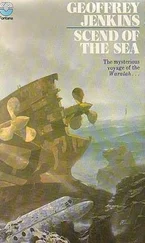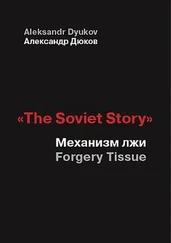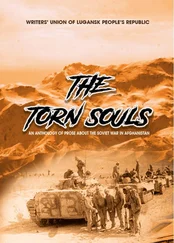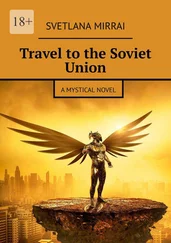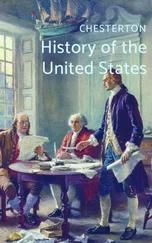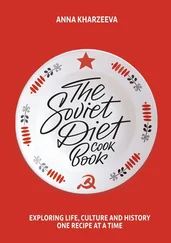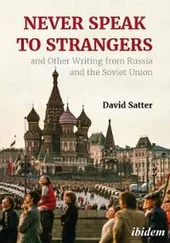Although Lenin’s memorandum was not publicly discussed, some of its spirit did find its way into the formal provisions of the Soviet constitution of 1923. For one thing the new state did not bear the appellation ‘Russia’: it was called the ‘Union of Soviet Socialist Republics’ (USSR), and was formally a federal union between its various constituent republics, in which none of them was supreme. Also Narkomnats as a forum for national opinion survived as a second chamber of the All-Union Executive Committee of the Soviets (VTsIK): called the Council of Nationalities, it gave equal representation to each union and autonomous republic, regardless of population. Significantly, though, Lenin did not recommend any change in the highly centralized functioning of the party: his conversion to the cause of the nationalities was never more than partial.
In most respects the new constitution embodied Stalin’s conceptions rather than Lenin’s. The distribution of governmental powers between the republics and the Union as a whole left the latter with all real authority not only in diplomatic and military matters, but also in the running of the economy, while the Union also secured the right to lay down general principles in the fields of justice, labour, education and public health. With the notable exception of culture and linguistic policy, this left most power in internal affairs, as well as external, in the hands of the Union.
Another strong centralizing factor, in practice, was the disparity between the Russian Republic and all the others. The RSFSR contained 90 per cent of the land-area and 72 per cent of the population of the Soviet Union, so that its constitutional status as just one republic among seven was a fiction. Add to this the fact that 72 per cent of members of the Communist Party were Russian, and it will be clear that only ironclad constitutional guarantees could have restrained Russia from dominating the Union. In the words of E. H. Carr, the Soviet Union was ‘the RSFSR writ large’. Or, to put it another way, the Soviet constitution of 1923 was Leninist in form, but Stalinist in content.
All the same, just a few residuary ambiguities remained in practice. The revolution and civil war had given most of the nationalities of the former tsarist empire at least a brief experience of real independence, such as they had not known for centuries, or in some cases had never known. This gave a tremendous impetus to feelings of national identity, and, taken together with the policies of cultural and linguistic autonomy pursued for some years yet, rendered non-Russian national identity far stronger than it had ever been under the tsars. This fact built permanent tensions into the working of the Soviet system.
5
The New Economic Policy and its Political Dilemmas
Even as the delegates to the Tenth Party Congress were voting for tight party discipline and the violent repression of the Kronstadt revolt, they also approved a radical change in economic policy, this time towards greater freedom. This was the abolition of grain requisitioning and its replacement by a tax in kind set at a much lower level than the compulsory deliveries. This measure was being tried out in Tambov and had been announced in Petrograd: it was conceived as a way of taking the sting out of popular discontent without making political concessions.
The abandonment of requisitioning had, however, profound economic consequences. Since the tax was both lower and more predictable than the requisitions had been, it gave the peasant an incentive once again to maximize the productivity of his plot of land, secure in the knowledge that whatever surplus he achieved could be sold for profit on the market. This meant, of course, that the government had to restore freedom of private trade. Since, moreover, peasants could not be expected to trade unless there was something to buy with the proceeds, it was obviously important to generate at least a reasonable supply of consumer goods. In practice, the easiest way to do this was to abolish the state monopoly of small- and medium-scale manufacture, retail trade and services.
This was in fact what the government did during 1921, while keeping heavy industry, banking and foreign trade in the hands of the state. Taken together, these measures became known as the New Economic Policy (NEP). In the urban markets the results were apparent immediately. When a hero of the novelist Andrei Platonov returned to his native town in 1921:
At first he thought the Whites must be in town. At the station was a café where they were selling white rolls without ration cards or queuing.... In the shop he came across all the normal equipment of trade, once seen in his long forgotten youth: counters under glass, shelves along the walls, proper scales instead of steelyards, courteous assistants instead of supply officials, a lively crowd of purchasers, and stocks of food which breathed an air of well-being.
Although some private trade recovered remarkably quickly, in general the economy was still in deep crisis. Years of war, conscription and food requisitioning had devastated agriculture, particularly in the most fertile regions. On top of this, the Volga basin experienced drought in 1920 and 1921. Unprotected by any reserves, peasant households faced two very poor harvests in succession. The result was famine on a scale that the government simply could not meet. For the one and only time, it allowed direct foreign aid inside Soviet Russia. An international relief committee was formed, which included prominent Russian non-Communists (who were all arrested once the emergency was over). But in spite of its efforts, probably about 5 million people died.
Industry, too, was in a desperate state. In the major branches of manufacture, output in 1921 was a fifth or less of the 1913 level: in the case of iron and steel it was actually below 5 per cent. The number of workers employed to generate this output did not fall below 40 per cent of the 1913 level, and here lay one of the major problems of the new era. For these underemployed workers were soon joined by a flood of new job-seekers, heading in from the countryside as soon as there was any prospect of a job, and also by millions of former soldiers demobilized from the Red Army. They joined the labour market at the very time when industrial concerns were having to adjust to the new conditions. Whether they were nationalized or private firms made no difference: henceforth there were to be no direct state subsidies. That meant the expenditure for fuel, raw materials, wages and further investment had to be met out of sales revenue. Firms had to balance their books, or they could well go out of business. This was a reality which workers, party and trade unions had to recognize.
The industrial recovery thus started on a very shaky basis. Initially this led to an imbalance in the terms of trade with agriculture. In spite of the famine, the ploughing and sowing of underused fields proved to be a much faster process than the re-equipment of damaged and dilapidated factories. By the summer of 1923 the shortage of industrial products in relation to agricultural ones had reached such a pitch that the ratio of industrial to agricultural prices stood at more than three times its 1913 level. What this meant in practice was that peasants who sold their produce on the market were not thereby raising enough revenue to buy the industrial goods they wanted. The danger was that repeated experiences of this kind would induce them to cut back their sowings–as they had done during the civil war–and food shortages would resume. Industrial products would then remain unsold, to everyone’s mutual disadvantage. Although the fact was not immediately recognized, this ‘scissors crisis’ (as it was called in reference to the divergent parabolas of industrial and agricultural prices) proved to pose a fundamental threat to NEP. The disputes generated by it formed the first stage in the long-term debate on the economic development strategy of the Soviet government (see below, pages 136–40).
Читать дальше

